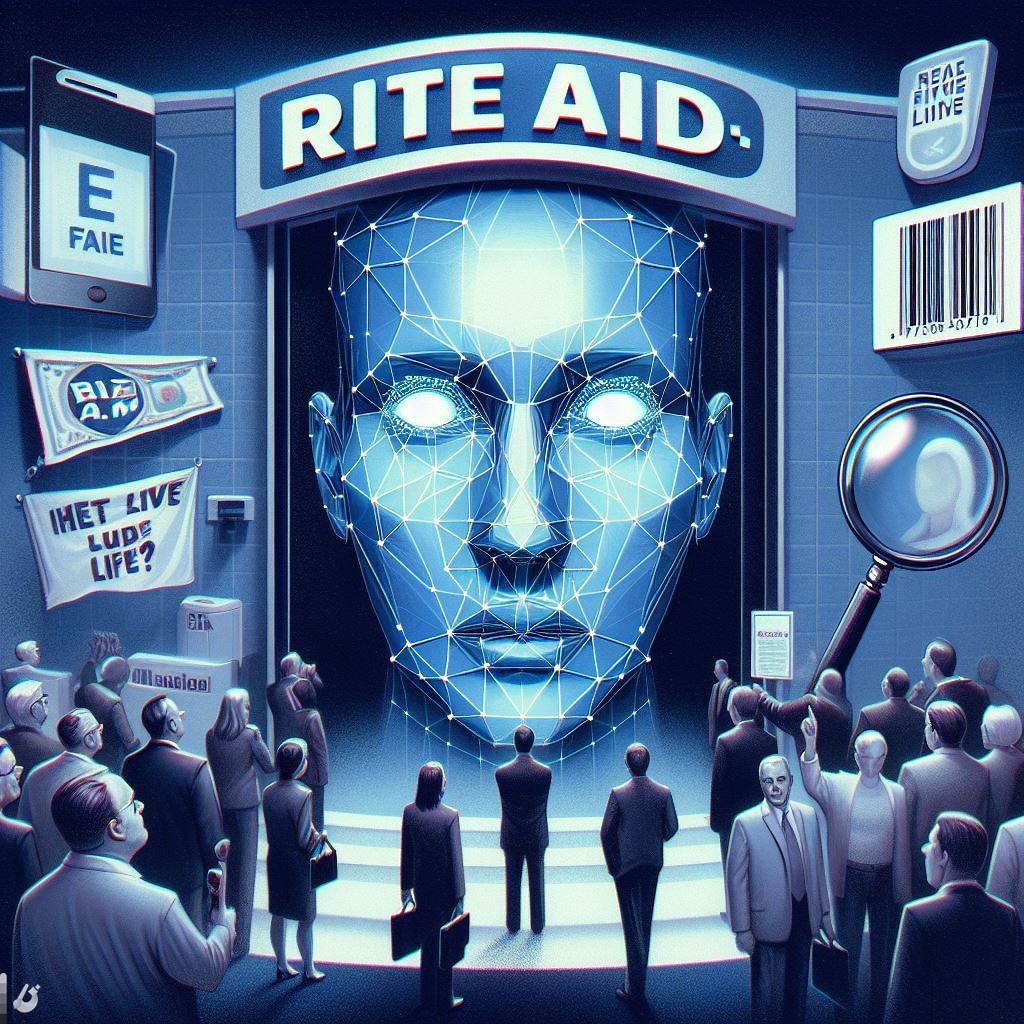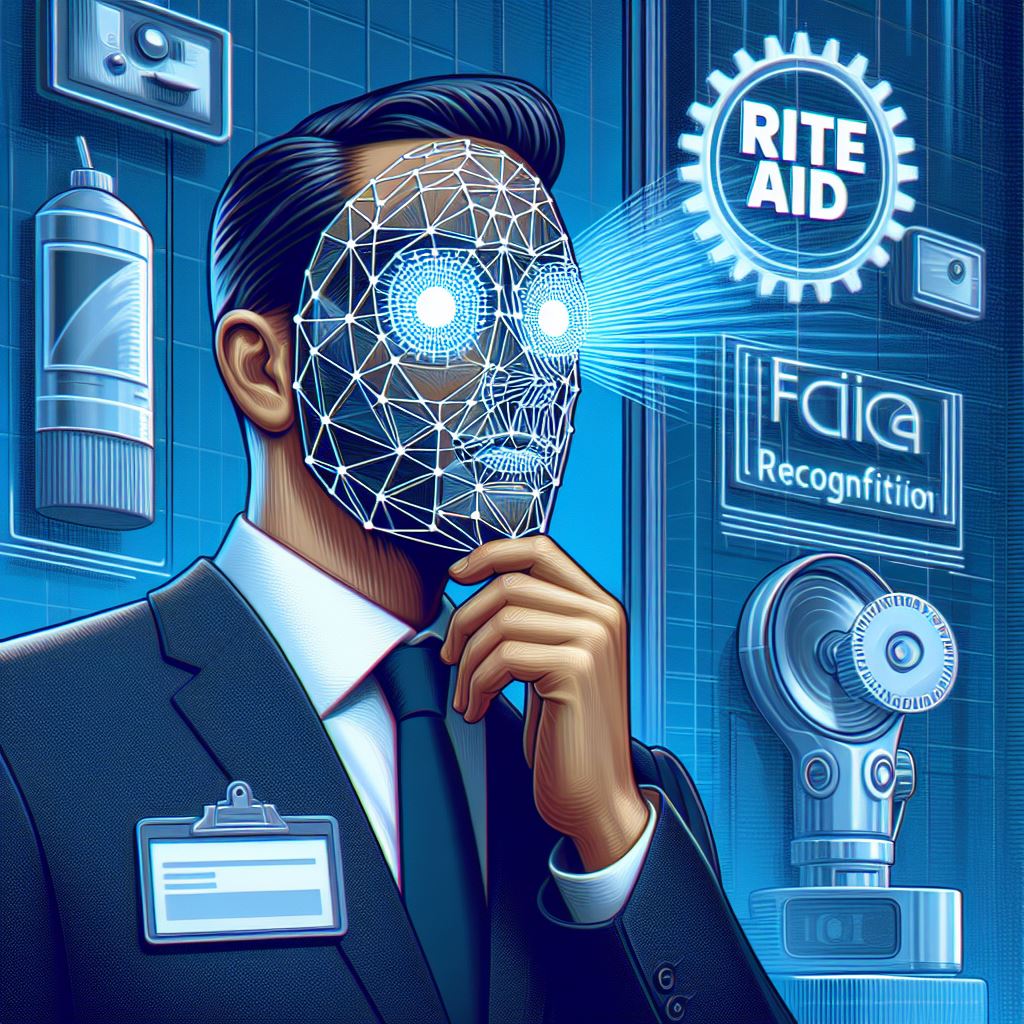Delve into the ethical dilemmas of AI surveillance, dissecting Rite Aid’s facial recognition missteps and the ensuing regulatory impact.
Contents
- 1 AI and the Ban on Rite Aid’s Facial Recognition Software: Protecting Privacy or Overreaching?
- 2 Conclusions
- 2.1 FAQs
- 2.1.1 1. Why did the FTC impose a ban on Rite Aid’s facial recognition software?
- 2.1.2 2. How did Rite Aid’s facial recognition system affect customers?
- 2.1.3 3. What biases were identified in Rite Aid’s technology?
- 2.1.4 4. What steps did the FTC mandate in its order against Rite Aid?
- 2.1.5 5. What is Rite Aid’s stance on the FTC’s allegations?
- 2.1 FAQs
AI and the Ban on Rite Aid’s Facial Recognition Software: Protecting Privacy or Overreaching?
Understanding the Ban
The Federal Trade Commission (FTC) recently imposed a five-year ban on Rite Aid, prohibiting the usage of facial recognition software. This decision stemmed from the FTC’s discovery of Rite Aid’s reckless implementation of facial surveillance systems, causing humiliation and risking customers’ sensitive information.
The FTC’s Order
The FTC’s Order, pending approval from the U.S. Bankruptcy Court due to Rite Aid’s Chapter 11 bankruptcy protection filing, mandates the deletion of collected images and derivative products.
Furthermore, it necessitates the establishment of a robust data security program safeguarding all gathered personal data.
The Reckless Implem
entation
Reports unveiled Rite Aid’s clandestine integration of facial recognition systems across 200 U.S. stores from 2012, particularly targeting lower-income, non-white neighborhoods for testing purposes.
The Unfortunate Consequences
Rite Aid, alongside contracted companies, formulated a “watchlist database” cataloging customers allegedly involved in criminal activity at their stores. However, these databases contained poor-quality images sourced from CCTV or employees’ mobile phones, leading to frequent false positives. As a result, employees often wrongly accuse customers, subjecting them to embarrassment, harassment, and unwarranted accusations of shoplifting.
Biometric Surveillance Scrutiny
The FTC’s increased scrutiny of biometric surveillance practices spotlighted Rite Aid’s unethical conduct. Notably, Rite Aid’s technology exhibited biased outcomes, generating more false positives in non-white communities, and exposing inherent biases within AI systems.

The Regulatory Void
Despite the escalating controversies surrounding facial recognition software, regulatory oversight remained limited, allowing companies like Rite Aid to operate without adequate testing or risk mitigation.
Rite Aid’s Response and Dispute
Rite Aid expressed contentment in reaching an agreement with the FTC but contested the core allegations. The company emphasized the pilot nature of the facial recognition program, which ceased over three years ago in a limited number of stores, preceding the FTC’s investigation.
Conclusions
The ban on Rite Aid’s facial recognition software echoes the need for stringent regulations in AI-driven surveillance technologies. It underscores the repercussions of unchecked AI deployment, especially concerning biases and privacy violations.
FAQs
1. Why did the FTC impose a ban on Rite Aid’s facial recognition software?
The ban was due to Rite Aid’s reckless implementation, leading to customer humiliation and privacy risks.
2. How did Rite Aid’s facial recognition system affect customers?
The system frequently generated false positives, resulting in unwarranted accusations and humiliation for customers.
3. What biases were identified in Rite Aid’s technology?
The system exhibited a higher likelihood of false positives in non-white communities, highlighting inherent biases.
4. What steps did the FTC mandate in its order against Rite Aid?
The order necessitates the deletion of collected images, the disposal of derived products, and the establishment of robust data security measures.
5. What is Rite Aid’s stance on the FTC’s allegations?
While Rite Aid reached an agreement, it disagrees with the core allegations, citing the limited scope and timeline of the facial recognition program.




